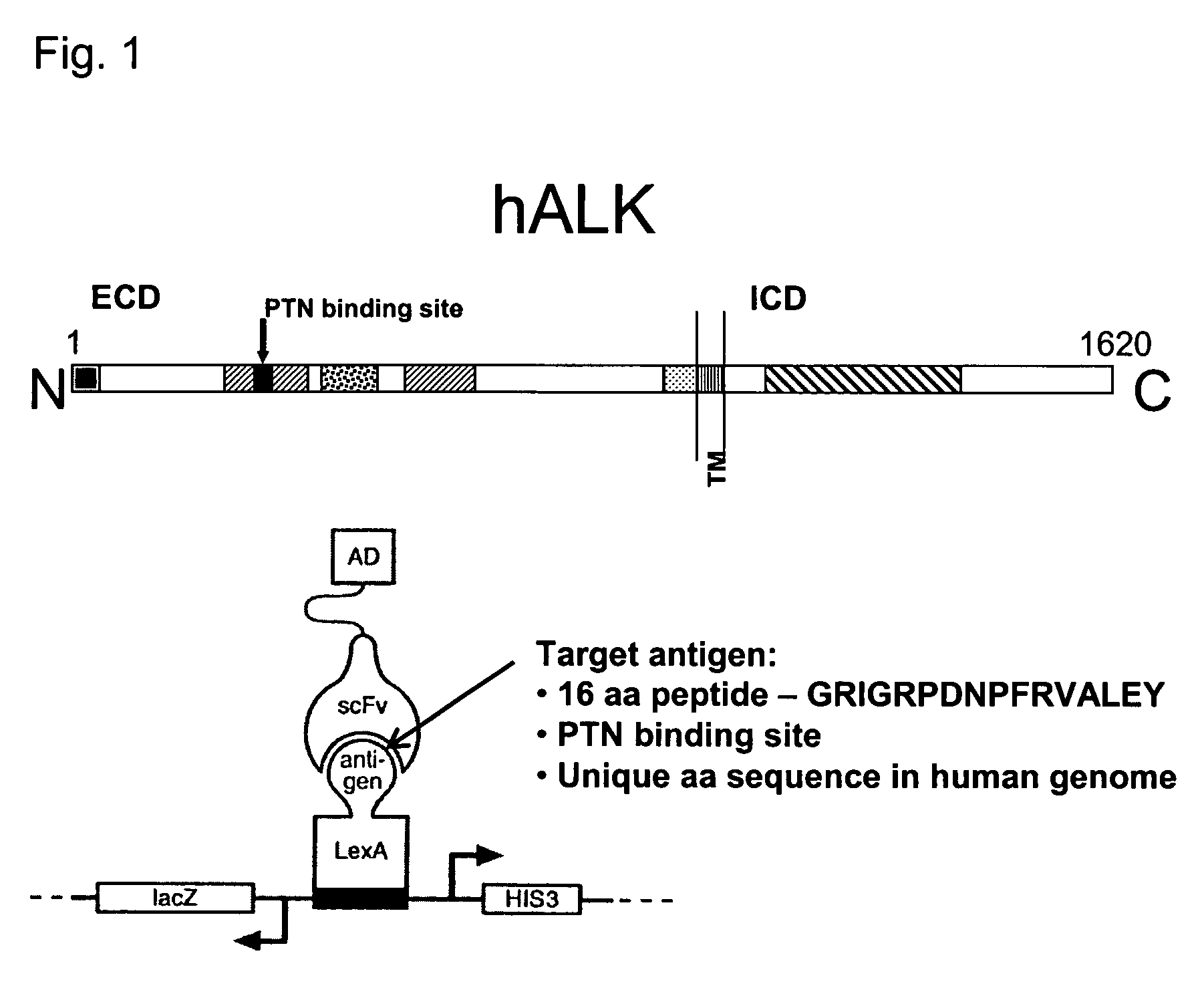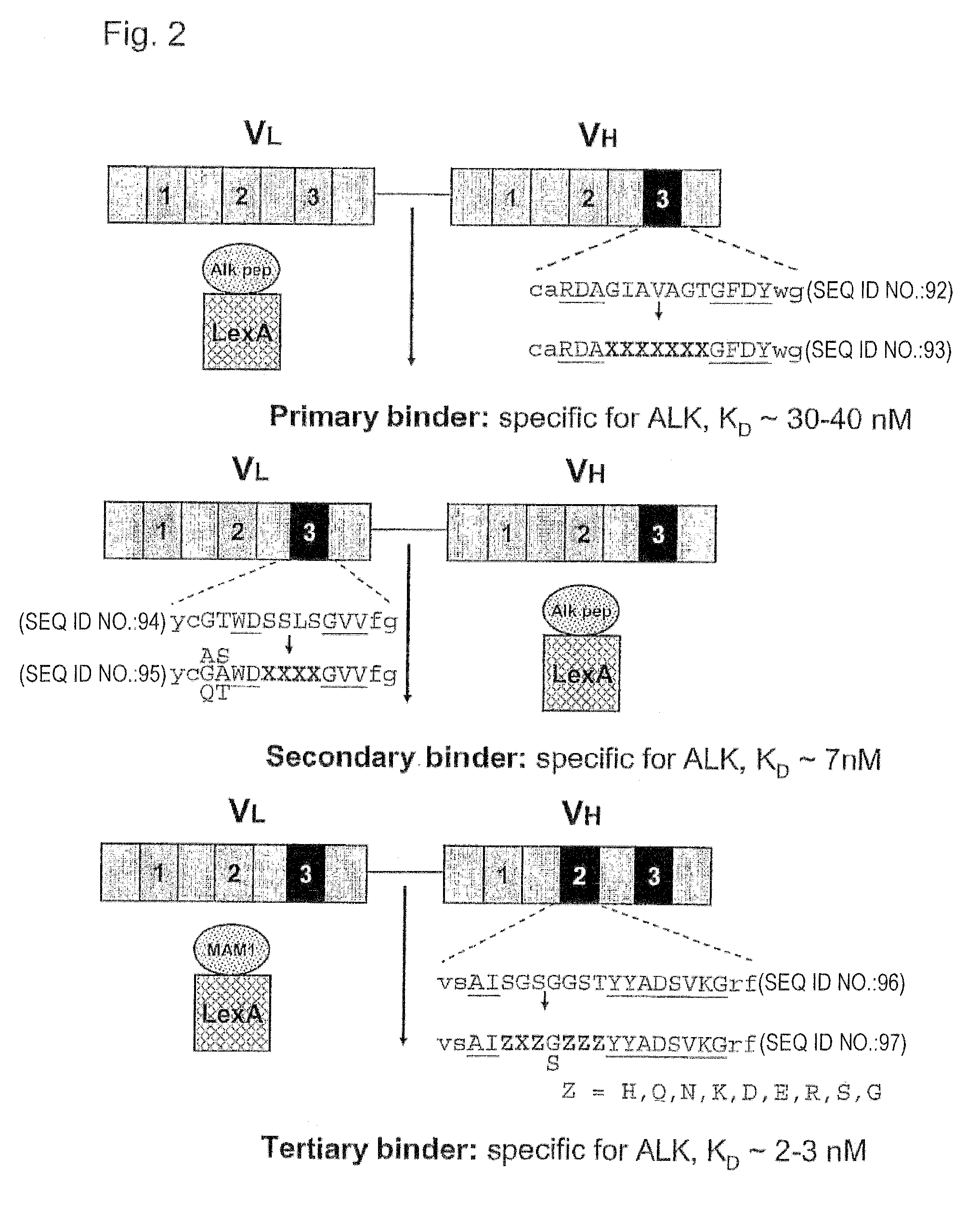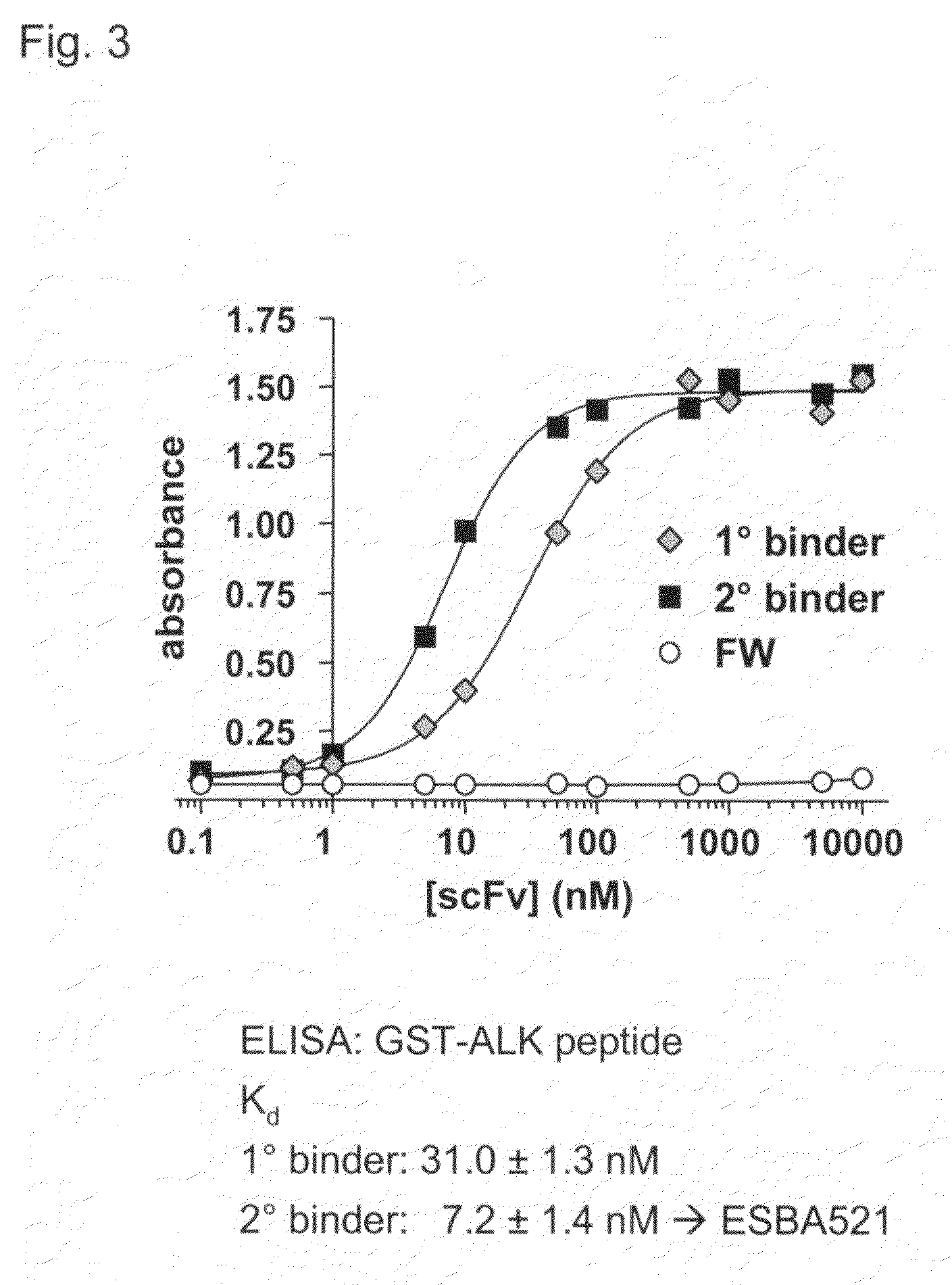Antibodies binding to the extracellular domain of the receptor tyrosine kinase ALK
an antibody and receptor technology, applied in the field of antibody specific for human alk (anaplastic lymphoma kinase), can solve the problems of poor patient survival, no correlation between alk expression and tumor biology, and pronounced overexpression correlation, etc., to achieve low immunogenicity, localize to appropriate sites, and high purification
- Summary
- Abstract
- Description
- Claims
- Application Information
AI Technical Summary
Benefits of technology
Problems solved by technology
Method used
Image
Examples
experiment 1
[0103] Screening to Identify Alk-Binding scFvs
[0104]In a wealth of structural studies on antibody-antigen interactions it was found that residues in the complementarity-determining region 3 (CDR-H3) of the heavy chain generally contribute the most substantial contacts to the antigen (Chothia and Lesk, 1987; Chothia et al., 1985; Padlan, 1994). We applied our recently described yeast two-hybrid antigen-antibody interaction screening technology to directly isolate antigen-binding scFvs by screening of four scFv libraries of randomized synthetic CDR-H3 sequences (Auf der Maur et al., 2002). The four libraries are based on four different stable human scFv frameworks in which 7 amino acids within the third CDR loop of the variable heavy chain (VH-CDR3) were randomized. The randomized parts were introduced by standard PCR cloning techniques. The scFv libraries were screened against a 16 amino acid peptide derived from the extracellular domain of the human tyrosine receptor kinase Anaplast...
experiment 2
[0111] Affinity Maturation
[0112]In order to obtain an scFv with higher affinity, this primary binder was subjected to a further affinity maturation process by mutagenesis and a second screening round in yeast. Enabling affinity maturation, the expression level of the LexA Alk LBD peptide fusion protein was reduced in order to lessen reporter gene activation driven by the interaction of the primary binder with the Alk LBD peptide. The strong actin promoter on the pBait1 vector was exchanged with the truncated and thus less active version of the ADH promoter (alcohol dehydrogenase) resulting in pBait3. This reduction of the bait expression level, in the presence of the primary binder, was sufficient to inhibit growth on plates lacking histidine and containing 5 mM 3-AT. Mutagenesis of the primary binder for affinity maturation was accomplished by randomizing parts of the CDR3 within the variable light chain. This was performed directly in yeast by homologous recombination (Schaerer-Br...
experiment 3
[0117] the ScFv ESBA521 Specifically Binds to the Transmembrane Form of Human ALK
[0118]In order to test whether the newly identified scFv was able to also recognize the transmembrane human ALK protein on the surface of living cells, immunostaining experiments of transiently transfected HELA cells were performed. ESBA521 reacts with the ALK protein in a comparable way as a polyclonal antibody (FIG. 4). In a control experiment it was shown that the framework 4.4 scFv does not react with human ALK. Surprisingly, ESBA521 only binds to the human Alk protein, but not to the corresponding mouse protein, although the mouse antigenic peptide only differs in two amino acid positions from the human peptide sequence. By contrast, the polyclonal ALK antibody recognizes both human and mouse protein. Therefore, binding of ESBA521 is specific for the human ALK protein at the cell surface.
PUM
| Property | Measurement | Unit |
|---|---|---|
| dissociation equilibrium constant | aaaaa | aaaaa |
| dissociation equilibrium constant | aaaaa | aaaaa |
| dissociation equilibrium constant | aaaaa | aaaaa |
Abstract
Description
Claims
Application Information
 Login to View More
Login to View More - R&D
- Intellectual Property
- Life Sciences
- Materials
- Tech Scout
- Unparalleled Data Quality
- Higher Quality Content
- 60% Fewer Hallucinations
Browse by: Latest US Patents, China's latest patents, Technical Efficacy Thesaurus, Application Domain, Technology Topic, Popular Technical Reports.
© 2025 PatSnap. All rights reserved.Legal|Privacy policy|Modern Slavery Act Transparency Statement|Sitemap|About US| Contact US: help@patsnap.com



